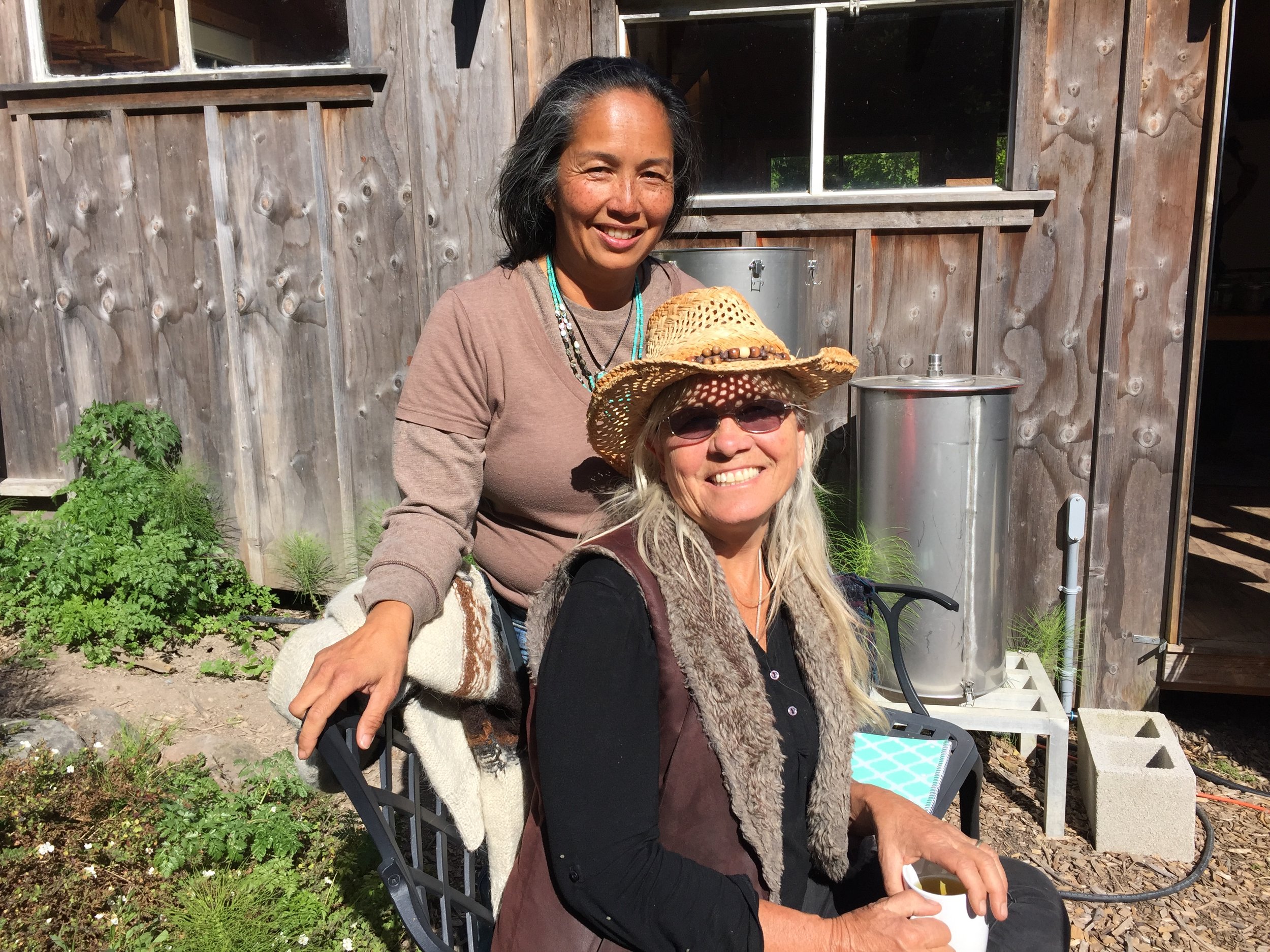Plant Meditation
What if you could learn directly from plants and bypass the textbooks? Wouldn’t that be lovely?
Last year I signed up to a regenerative herbalism program in California. The very first day we had a discussion about sitting quietly with a plant, tuning in, and asking to receive a teaching.
My teachers from the course
I sat amongst apple trees and daffodils. What came through for me that day was grief. Daffodils remind me of my childhood in England and my mother. She had died less than a year before that day. In California it was springtime. Back home in Canada the ground was frozen. Grief upwelled, pushing with the strength of a river in flood.
Later, back amongst the group, I listened to stories and teachings the other students had received. It was incredible. Thistle, borage, calendula, skullcap, rosemary, nettle – all these plants had a lot to say.
The course changed my way of thinking about plants. I’ve never found it easy to memorize lists. Books with charts of all the amazing properties of each plant are interesting… for a page… and then it’s hard to keep track. Almost every plant has antibacterial properties – so how do you choose which one to use?
Here’s what I learned:
Choose three to ten plants. Choose plants that grow happily where you live. You’ll have plenty of choice no matter where you are. Get to know these plants deeply. Grow them in your garden or find them where they grow naturally. As you get to know them you’ll find they have a character, a personality.
Last summer I became curious about yarrow and dandelions, borage and rosemary. I made a tincture with dandelion root and yarrow. I noticed yarrow wherever she grew. Nina, my daughter, became adept at spotting yarrow and we talked about her long history as a styptic (she’s been used as a first aid remedy to stop bleeding for centuries). I also began to intuit something else about yarrow. She felt like a warrior plant (I think of ‘her’ as a her although in truth I doubt she has a gender). She’s got grace in the way of a warrior goddess – powerful, possibly intimidating if you met her in the flesh – I suspect she’s a plant that can help open you to your greatness and push through blockages.
I spent a day outdoors with a Cree elder who teaches plant medicine. We were in the foothills of the Rockies, in a place where the ground had been disturbed repetitively by cattle. Dandelions grew everywhere. She asked us to go and sit with a sketchpad and pens and draw dandelions. As I drew I found myself wanting to write. I started writing a superficial description of what I saw, and I began to intuit something deeper. I wrote my way into the deeper intuition.
Through the surface layer of words I suddenly found myself writing about dandelions ability to heal the broken earth; how she can grow in toxic, spoiled areas; how she will always grow; she’s powerful – and then I recalled my knowledge of dandelion as a powerful liver cleanser and suddenly the words were flowing and I had a direct knowing, a connection to the plant that was as clear as wise words printed in a text book. I was elated. I’d had my first crystal clear teaching directly from a plant.
I walked back to the group comfortably walking on dandelion flower heads. Usually I feel guilty for walking on flowers. But I knew, from my teaching, that dandelion is robust. Trample on a few flowers – that’s fine – there are more, there will always be more. Dandelion will always come as one of the first plants to heal a place and that will always be it’s role. Dandelion has the power of an army.
So, how do you do this? How do you learn directly from plants? How do you do a plant meditation?
I suspect there are many ways but my favourite is the sketchpad, writing method:
Go out for a walk with pens and paper. Go and sit somewhere you won’t be disturbed.
Give yourself 20-30 minutes. Give yourself enough time so that in your mind you know you are not rushing. Set up time parameters to support you so you don’t get anxious about not having enough time to settle and get calm.
Take a breath and feel the space around your heart. Imagine the energy around your body, around your heart. Feel spacious as though you can extend your perception out to the horizon. Try to stay connected to this sense of spaciousness.
Next remind yourself you don’t need to achieve anything. It’s okay if this just turns into quiet time in nature. How lovely to sit down like Beatrix Potter did and sketch and write.
Pull out your colours and pencils and start sketching. Notice details, colours, textures. Don’t worry about accuracy just take in what you are seeing and let your image be a representation.
Then start to write about what you see and what you’re thinking. Write about the plant you are sketching; the season; the other plants you see; the weather; the time of day; the sounds; the smells. Write… and write…. Try to keep writing for two to three minutes without stopping… then write a bit more.
What ideas come to you as you write? Don’t question just write.
Then after a time let yourself be done…. But if it feels like there might be more stick with it… write… draw… move…lie down, take a nap… You might even find yourself humming a song.
I would love to hear about your experience in the comments below!


